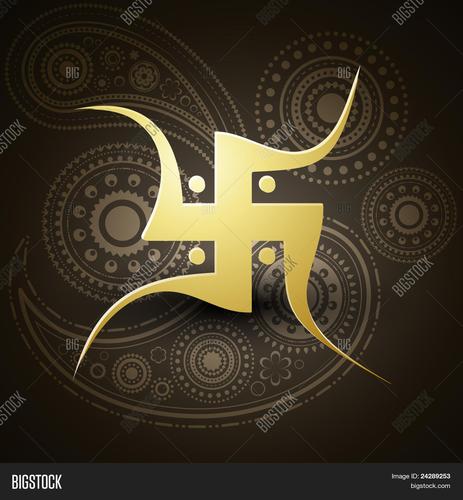Om and Swastik Symbol: A Comprehensive Overview
The Om symbol and the Swastik symbol are two of the most significant and widely recognized symbols in Hinduism and other Eastern religions. Both hold deep spiritual and cultural meanings, and their significance extends beyond religious contexts. In this article, we will delve into the origins, meanings, and various dimensions of these symbols.
Origins of the Om Symbol
The Om symbol, also known as the “Aum” or “Omkar,” is considered the primordial sound of the universe in Hinduism. It is believed to be the source of all sounds and is often chanted as a mantra. The symbol itself is composed of three curves and a dot, and its origins can be traced back to ancient India.

Archaeological evidence suggests that the Om symbol has been in use for over 3,500 years. It is found in various ancient texts, including the Rigveda, one of the oldest sacred texts in Hinduism. The symbol is also depicted in numerous ancient artifacts, such as seals, sculptures, and paintings.
Meanings of the Om Symbol
The Om symbol holds profound spiritual meanings in Hinduism. It represents the unity of the universe and the interconnectedness of all living beings. Here are some of the key meanings associated with the Om symbol:
-
The three curves represent the past, present, and future. The dot represents the eternal present moment.
-
The symbol represents the four states of consciousness: waking, dreaming, deep sleep, and pure consciousness.
-
The Om symbol is considered to be the source of all creation and the ultimate reality.
-
It is often chanted as a mantra to invoke divine energy and to achieve spiritual enlightenment.
Swastik Symbol: A Brief History
The Swastik symbol is an ancient symbol that has been used in various cultures and religions throughout history. It is often depicted as a right-facing or left-facing spiral, and its origins can be traced back to prehistoric times.
In Hinduism, the Swastik symbol represents auspiciousness, good fortune, and well-being. It is associated with the sun, fire, and the divine. The symbol is commonly used in religious rituals, ceremonies, and art.
However, the Swastik symbol has also been associated with the Nazi regime in Germany during World War II. The Nazi party adopted the symbol as their emblem, which led to its negative connotations in the Western world.
Symbolism and Cultural Significance
Beyond their religious and spiritual meanings, the Om and Swastik symbols hold cultural significance in various societies.
The Om symbol is widely used in Hindu temples, homes, and other religious spaces. It is often seen in the form of intricate carvings, paintings, and jewelry. The symbol is also used in yoga and meditation practices to invoke divine energy and to achieve spiritual balance.
The Swastik symbol, on the other hand, is used in Hinduism, Buddhism, and Jainism to represent auspiciousness and good fortune. It is also found in various other cultures, such as the Celtic, Norse, and Slavic cultures.
Comparative Analysis
While both the Om and Swastik symbols share some similarities, such as their ancient origins and cultural significance, there are also notable differences between them.
| Om Symbol | Swastik Symbol |
|---|---|
| Primordial sound of the universe | Symbol of auspiciousness and good fortune |
| Used in Hinduism, Buddhism, and Jainism | Used in various cultures and religions |
| Chanted as a mantra for spiritual enlightenment | Used in religious rituals and ceremonies |
Despite their differences, both symbols have played significant roles in shaping the cultural and spiritual landscapes of their respective societies.
Conclusion
The Om and Swastik symbols are two powerful and enduring symbols that hold deep spiritual and cultural meanings. While their origins and interpretations may vary, both symbols continue to be revered and celebrated in various societies around the world.



